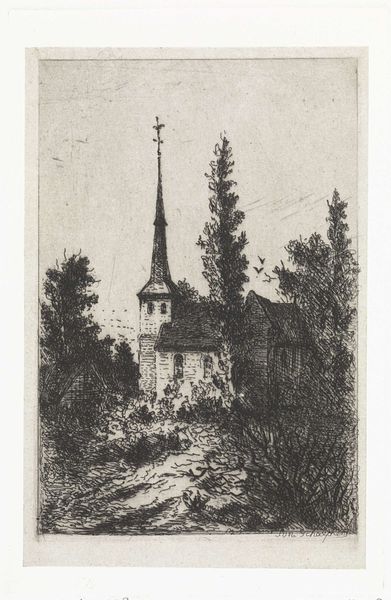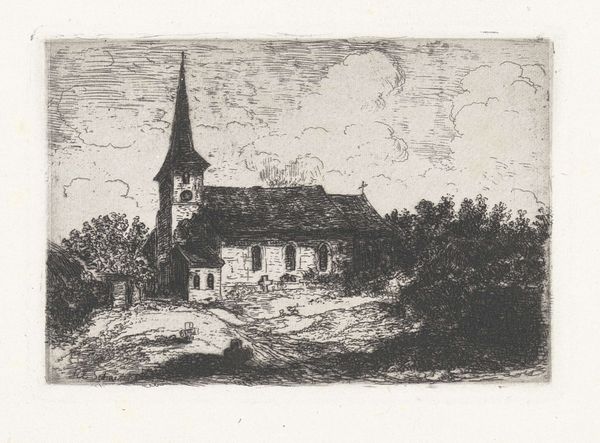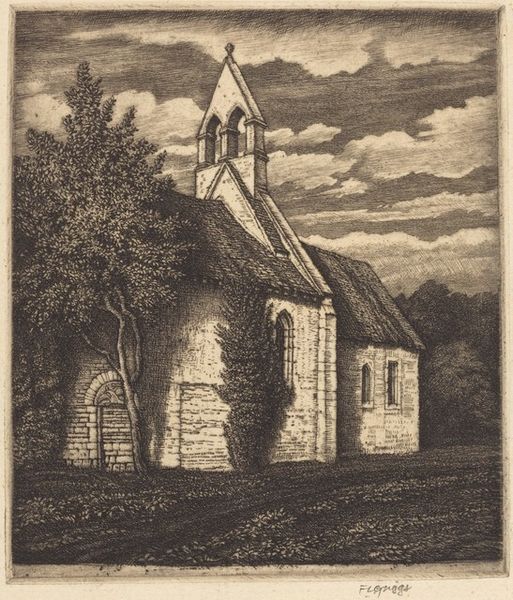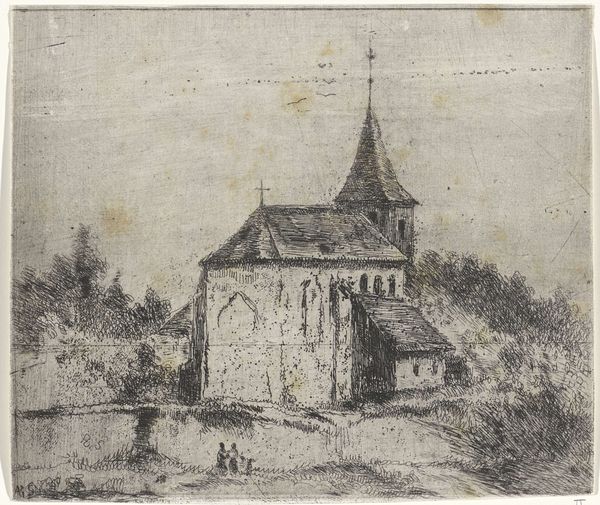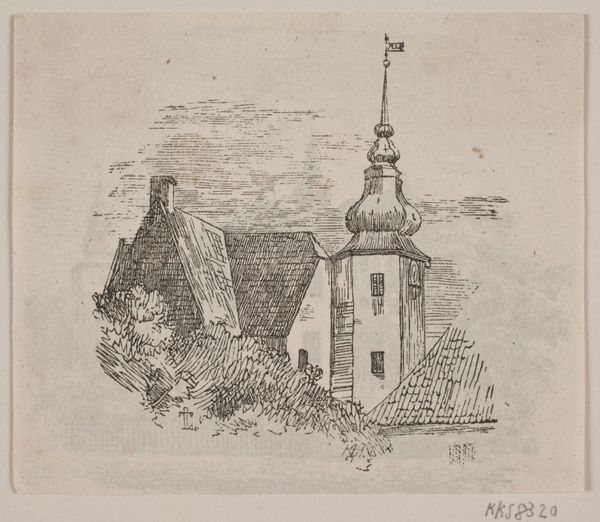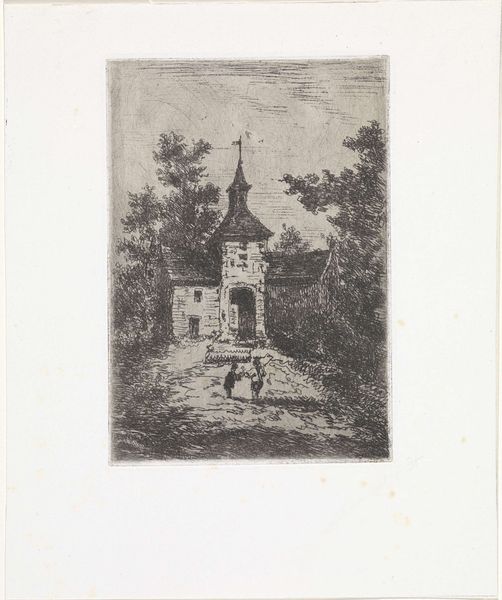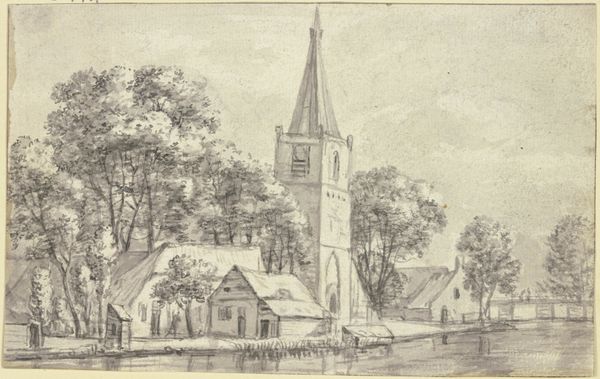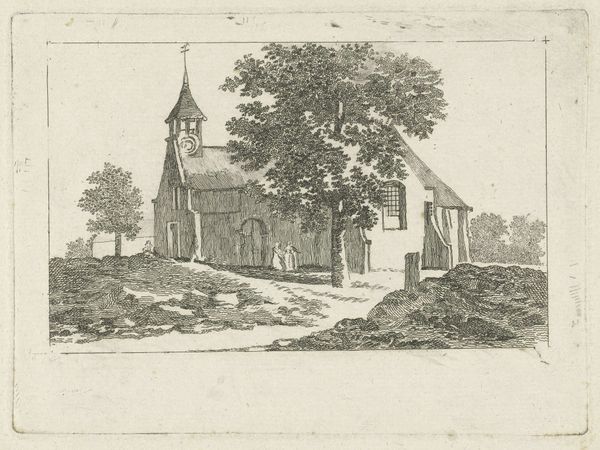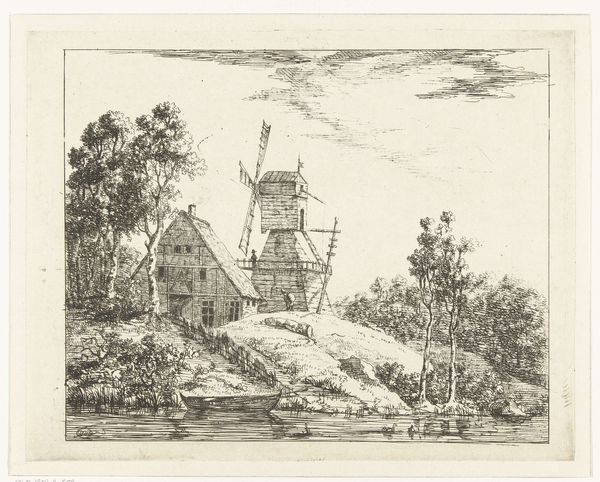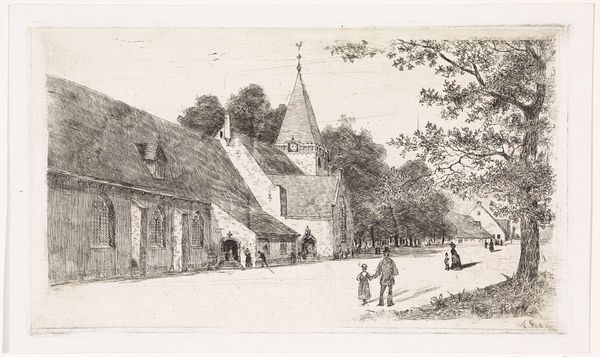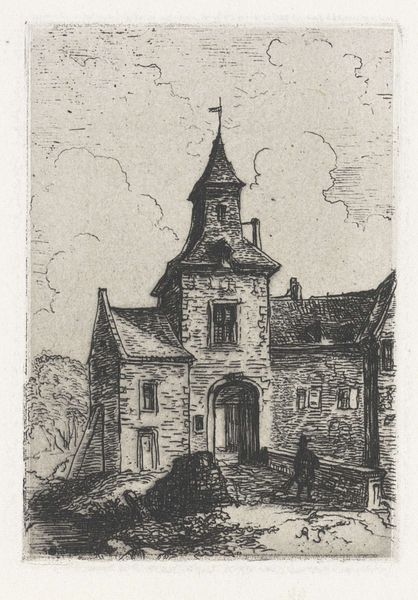
Dimensions: height 191 mm, width 135 mm
Copyright: Rijks Museum: Open Domain
Curator: This etching, known as "Kapel," created by Arnoud Schaepkens between 1855 and 1904, invites us to contemplate a solitary chapel in a landscape setting. Editor: Immediately, I'm struck by the somber mood. The density of lines used to depict the trees contrasts strongly with the chapel, and the sky reads almost like a blank void. The artist seems to be interested in highlighting a contrast of textures using ink on paper. Curator: Yes, there is a palpable contrast. Chapels throughout history have always functioned as symbols of hope, but consider also their physical location. They're usually placed where people meet nature, or are exposed to danger. Is it the artist suggesting the divine resides in places where we must overcome or face our vulnerabilities? Editor: The architecture here is interesting too. The artist depicts very simple shapes creating the geometry of the building; see how the horizontal strokes that mark the chapel walls almost clash with the texture and direction of the strokes he uses for the land, bringing about a strange spatial ambiguity. The chapel almost seems flattened against its background. Curator: Precisely! And what of the tiny figures in the foreground? It is difficult to ascertain much detail, but their scale underscores the smallness of humankind in comparison to something grand, in both physical and metaphysical ways. This is why it has Romantic echoes to it, this idea of the sublime in everyday scenery. Editor: It could be argued that the artist does not depict human figures from a single, fixed viewpoint; in order to convey movement and perhaps energy of subjects in flux. As though the scene is only fleeting, never fully composed or ordered. The materiality of etching accentuates that; its scratchy lines feel immediate and a little rough. Curator: Interesting, seeing that contrast with Romanticism! Still, I feel it draws us to our cultural memory. How these places act as witness. Consider too that the etching is made with lines, like how we remember moments as an experience, connecting one detail at a time. Editor: True. It definitely feels like a fragment, less of a perfect record, more a personal one. Thanks to the close examination of the formal qualities, the romantic aspect can be felt from the rendering as opposed to symbolic gesture alone.
Comments
No comments
Be the first to comment and join the conversation on the ultimate creative platform.
